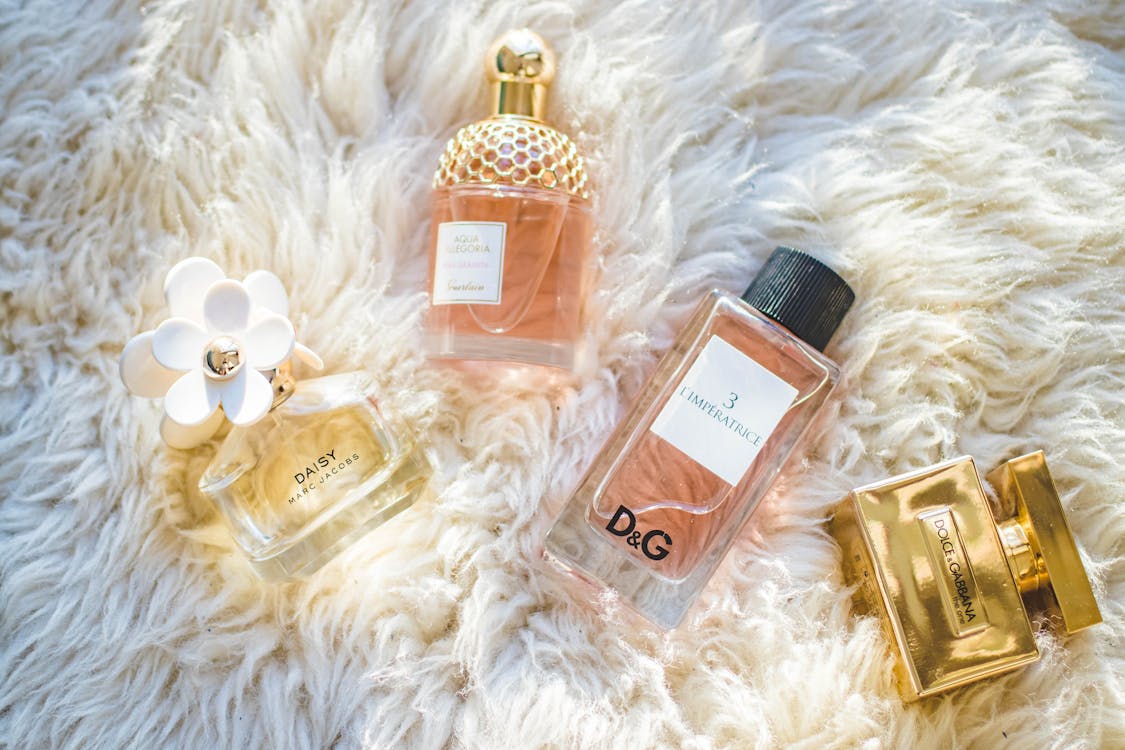The Ultimate Guide to Perfumes: Unveiling the Top 50 All-Time Best Fragrances
Welcome, fragrance enthusiasts and connoisseurs, to a journey that will awaken your senses and ignite your passion for the world of perfumes. In this comprehensive guide, we will explore the art of fragrance creation, delve into the fascinating history of perfumery, and present to you the crème de la crème—the top all-time best perfumes that have captivated hearts and minds throughout the ages. Get ready to embark on an olfactory adventure like no other!
The Essence of Perfumery
The Perfumer's Palette:
In the vast world of perfumery, the perfumer's palette is a rich tapestry of aromatic ingredients and notes that come together to create captivating scents. Fragrances are categorized into various families, each with its distinct characteristics and olfactory profiles. Some of the commonly recognized fragrance families include:
- Floral: This family comprises fragrances dominated by floral notes such as rose, jasmine, lily of the valley, and iris. Floral perfumes are often associated with femininity, romance, and elegance.
- Oriental: Known for their opulence and sensuality, oriental fragrances feature warm and exotic notes like vanilla, amber, spices, and precious woods. They evoke a sense of mystery and allure, making them ideal for evening wear or special occasions.
- Woody: The woody fragrance family encompasses scents that highlight the earthy, warm, and comforting aromas of woods like sandalwood, cedarwood, and patchouli. These perfumes often have a grounding effect and are suitable for both men and women.
- Fresh: Refreshing and invigorating, fresh fragrances are reminiscent of the great outdoors and feature notes such as citrus, herbs, and aquatic elements. They are perfect for daytime wear and evoke a clean, energetic vibe.
- Notes: Understanding the art of blending is key to crafting harmonious and balanced perfumes. A fragrance typically consists of three layers known as notes: top, middle, and base notes. Top notes are the initial burst of scents that are perceived immediately after applying the fragrance. They are often light and refreshing, creating the first impression of a perfume. Middle notes, also called heart notes, emerge as the top notes dissipate. They form the core of the fragrance and provide its character and personality. Finally, base notes are the foundation of the perfume, lingering on the skin for hours. They are often deep, rich, and long-lasting, contributing to the fragrance's longevity and allure.
Unravelling Fragrance Jargon:
Navigating the world of perfumery requires understanding the specific terminology associated with fragrances. Here are some key terms to familiarize yourself with:
- Concentration Levels: Perfumes come in varying concentrations, which determine the intensity and longevity of the fragrance on the skin. The most common concentration levels include:
- Eau de Parfum (EDP): A perfume with a higher concentration of fragrance oils, typically between 15% and 20%. EDPs offer a longer-lasting scent experience.
- Eau de Toilette (EDT): This concentration level contains a slightly lower percentage of fragrance oils, usually ranging from 10% to 15%. EDTs are lighter and ideal for everyday wear.
- Eau de Cologne (EDC): With a lower concentration of fragrance oils (around 5% to 8%), EDCs have a refreshing and invigorating effect. They are often used as splashes or sprays for a quick pick-me-up.
- Perfume Notes: Notes refer to the individual aromas that make up a fragrance. As mentioned earlier, they are classified into top, middle, and base notes. Understanding the different notes and their combinations is crucial in selecting perfumes that align with your preferences.
- Fragrance Longevity and Sillage: Longevity refers to the duration of time a fragrance lingers on the skin after application. Some fragrances may last several hours, while others may fade more quickly. Sillage, on the other hand, refers to the trail or projection of the fragrance.
By familiarizing yourself with these terms, you can make informed choices when exploring and selecting perfumes that best suit your desired scent experience.
The Perfume Journey Through History
Ancient Origins:
The origins of perfumery can be traced back to ancient civilizations, where fragrances played significant roles in religious rituals, personal grooming, and cultural practices.
In ancient Egypt, perfume held immense value and was associated with divinity and spirituality. The Egyptians used aromatic substances, such as myrrh and frankincense, in religious ceremonies and burial rituals. They also created elaborate perfume blends using oils extracted from flowers, spices, and resins.
Perfumery flourished in ancient Mesopotamia (modern-day Iraq) as well. The Mesopotamians developed sophisticated distillation techniques and utilized ingredients like myrrh, cinnamon, and cedarwood to create fragrances for personal adornment and religious rituals.
The ancient Greeks also embraced perfumery, using scented oils and fragrant wreaths to adorn their bodies and temples. They believed that perfumes had the power to please the gods and enhance one's well-being.
Perfumery in the Middle Ages:
During the Middle Ages, the Arabian world played a crucial role in preserving and advancing the art of perfumery. Arab scholars and perfumers refined distillation techniques and expanded the range of aromatic ingredients available. They introduced the concept of attar—an oil-based perfume made through the distillation of flowers, herbs, and spices—and it became highly prized across the Islamic world.
Perfume-making was embraced by the European nobility, who valued scents for their luxurious and seductive qualities. The Crusaders brought back exotic fragrances from the East, igniting a fascination with oriental perfumes. Fragrances such as rose, jasmine, and ambergris gained popularity among the elite, and fragrance creation became an esteemed profession.
The Renaissance and Beyond:
The Renaissance marked a period of rebirth and innovation in various artistic fields, including perfumery. Influenced by the flourishing trade routes and newfound knowledge, perfumers began incorporating ingredients like citrus fruits, herbs, and spices into their creations. The Italian city of Florence became a hub of fragrance production, giving rise to renowned perfume houses like Santa Maria Novella.
The rise of luxury perfumes gained momentum in the 18th and 19th centuries. Fragrance houses such as Guerlain, Creed, and Houbigant emerged during this period, crafting exquisite scents that became symbols of refinement and opulence. Perfumery became an essential part of fashion and personal grooming, with perfumers catering to the tastes and preferences of the elite.
As time progressed, perfumery continued to evolve, with new ingredients, techniques, and trends shaping the industry. Today, perfume houses and independent perfumers alike explore innovative combinations and unique concepts, pushing the boundaries of olfactory artistry.
The journey of perfumery through history showcases the enduring allure of scents and their profound impact on culture, spirituality, and personal expression. Each era has contributed to the rich tapestry of fragrance creation, laying the foundation for the diverse and captivating perfumes we enjoy today.
The Top All-Time Best Perfumes
*Note: The order is not indicative of ranking, as personal preference plays a significant role in choosing a favorite fragrance.
- Chanel №5: The epitome of sophistication and elegance.
- Guerlain Shalimar: A tribute to exoticism and sensuality.
- J’adore: A modern icon that exudes femininity and allure.
Enigmatic Orientals:
- Tom Ford Black Orchid: A dark, intoxicating blend of spices and florals.
- YSL Opium Pour Homme: An oriental masterpiece with an opulent character.
- Al Haramain Amber Oud: A mesmerizing journey through the mystical East.
Ethereal Florals:
- Jo Malone London Peony & Blush Suede: A delicate bouquet of peonies and roses.
- Flowerbomb Viktor & Rolf : A floral explosion that leaves a lasting impression.
- Hermes Jardin sur le Nil: A vibrant and lush garden captured in a bottle.
Woody Wonders:
- Lattafa Bade'e Al Oud: A mesmerizing blend of amber and wood.
- Chopard Casmir: A masterpiece of sophistication with a fruity, smoky undertone.
- Paloma Picasso: A mystical and bohemian fragrance inspired by nature.
Perfume Tips and Tricks
Fragrance Application Techniques:
- Pulse points and body heat: Maximizing scent projection.
- Layering fragrances: Creating unique and personalized blends.
- Perfume storage and preservation: Protecting your precious scents.
Exploring Niche and Artisanal Perfumes:
- The world of independent perfumers and their innovative creations.
- Finding hidden gems: Navigating the niche fragrance market.
50 All-Time Best Perfumes
Here are 50 all-time best perfumes that have captivated fragrance enthusiasts throughout history:
- Chanel №5
- Shalimar
- Joy
- Miss Dior
- J’adore
- Opium
- Coco Mademoiselle
- Viva La Juicy
- Elizabeth Taylor, White Diamonds
- Dior Sauvage
- Tom Ford Black Orchid
- YSL Black Opium
- Gucci Guilty
- Narciso Rodriguez for Her
- Chloé Nomade
- YSL Mon Paris
- Flowerbomb
- La Vie Est Belle
- Acqua di Gio
- Acqua di Parma Colonia
- Chanel Chance
- Dior Miss Dior Blooming Bouquet
- Vera Wang Princess
- Hermes Terre d’Hermes
- Tom Ford Tobacco Vanille
- Mugler Alien
- Dior Hypnotic Poison
- Victoria’s Secret Bombshell
- Prada La Femme
- YSL Libre
- Happy By Clinique
- DKNY Be Delicious
- Jo Malone London English Oak & Hazelnut
- Al Haramain Amber Oud
- Ariana Grande Cloud
- Guerlain Shalimar
- Davidoff Cool Cool Water
- Dior Dune
- Calvin Klein Eternity
- Yves Saint Laurent Paris
- Nina Ricci L’Air du Temps
- YSL Opium Pour Homme
- Chloe Eau De Parfum
- Carolina Herrera Good Girl
- Marc Jacobs Daisy
- Prada Candy L’Eau
- Versace Bright Crystal
- Dolce & Gabbana Light Blue
- Armani Code
- Thierry Mugler Alien
Each of these perfumes represents an iconic fragrance that has left an indelible mark on the world of perfumery. From timeless classics to modern masterpieces, these scents embody creativity, artistry, and the power to evoke emotions.
As we conclude our journey through the captivating realm of perfumery, we hope you have discovered new fragrances to adore and gained a deeper understanding of the art of perfume creation. Perfumes have the remarkable power to evoke emotions, spark memories, and leave an indelible impression. Embrace the adventure of exploring scents, and let your olfactory senses guide you on a fragrant path of self-expression and luxury.
Remember, finding your signature scent is a personal and intimate experience. May this guide serve as a starting point on your quest for the perfect fragrance—one that embodies your unique essence and adds an enchanting aura to your every step.
Happy Scent-Sasional Discoveries!



.png)





Comments
Post a Comment